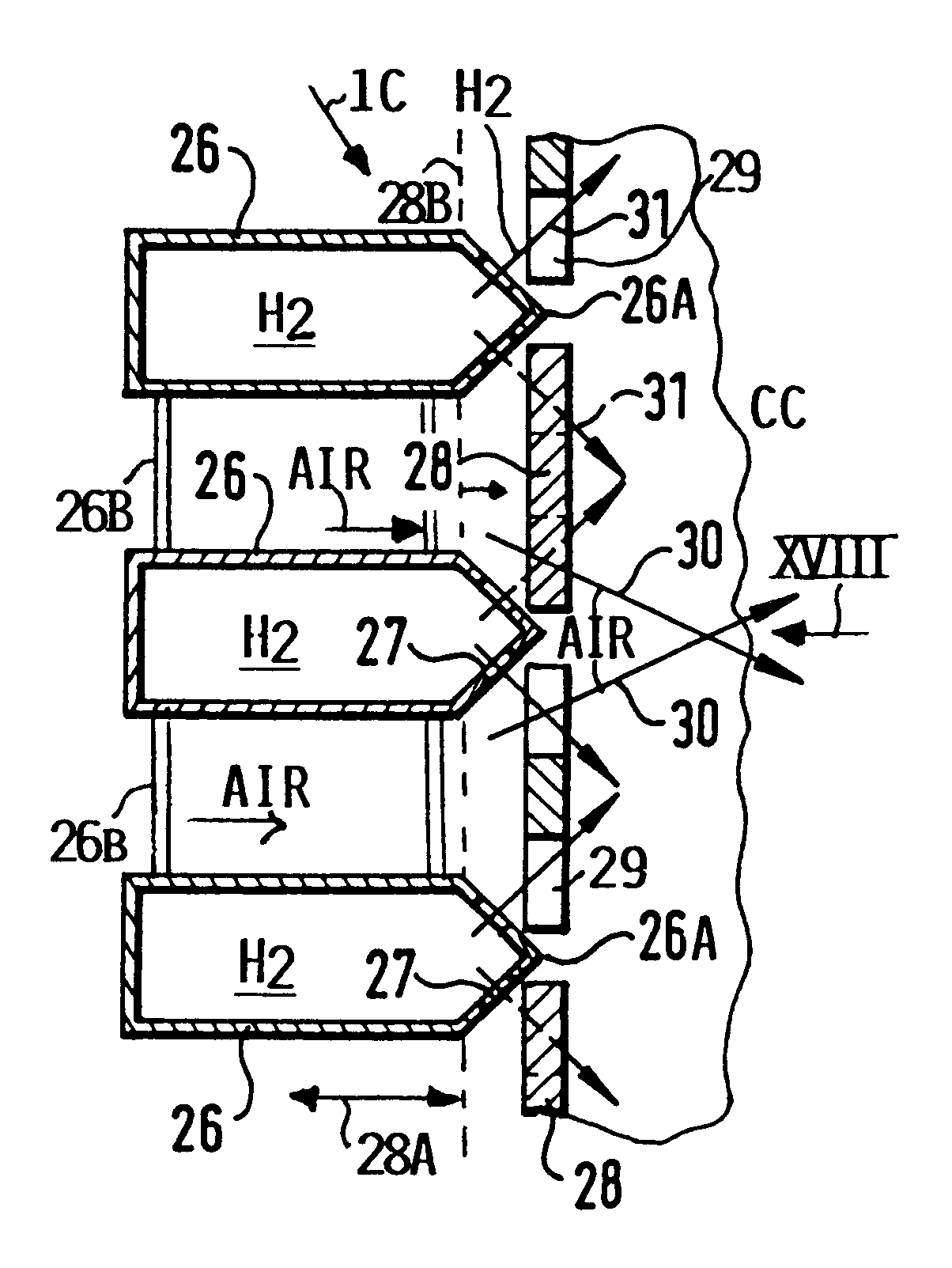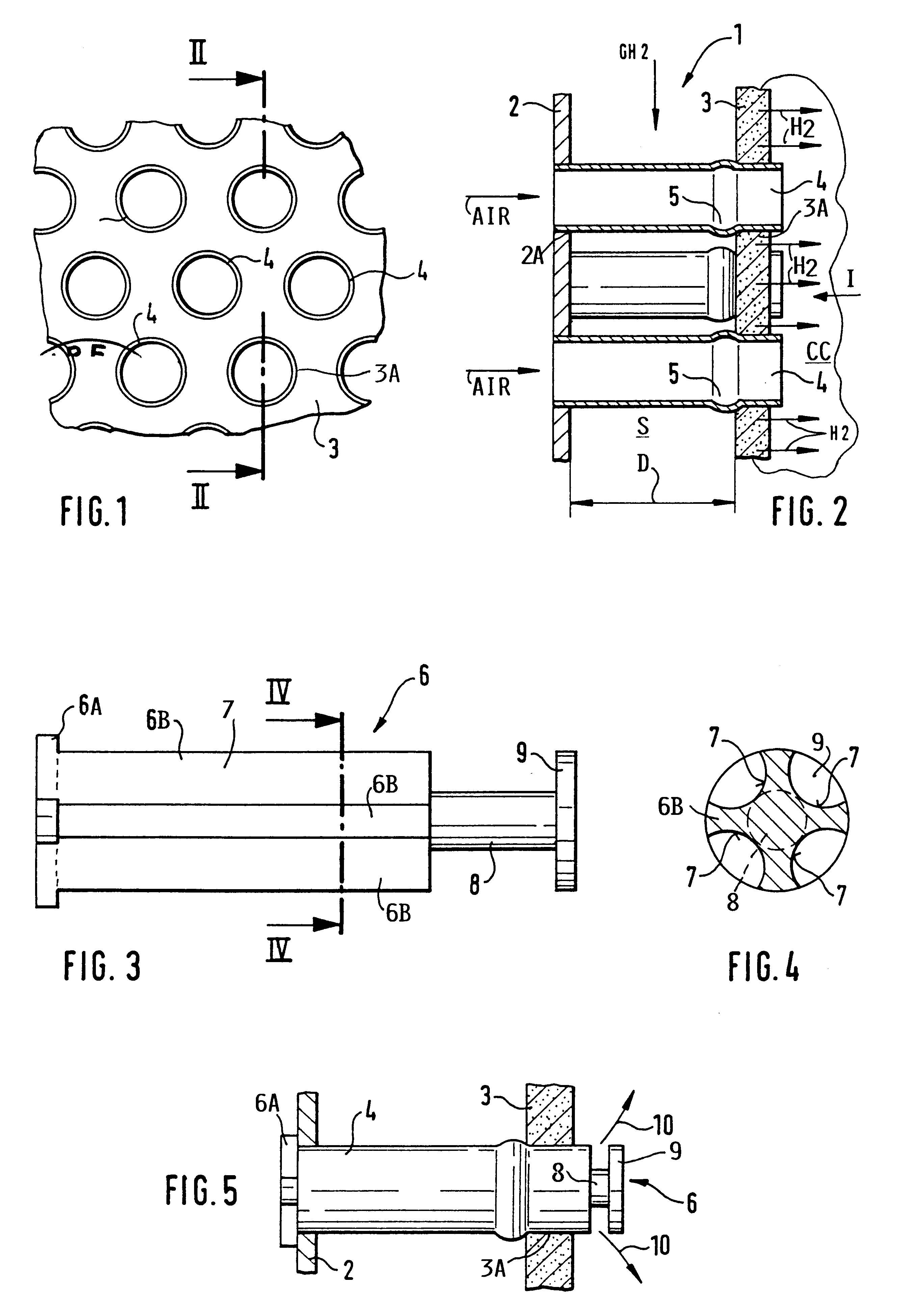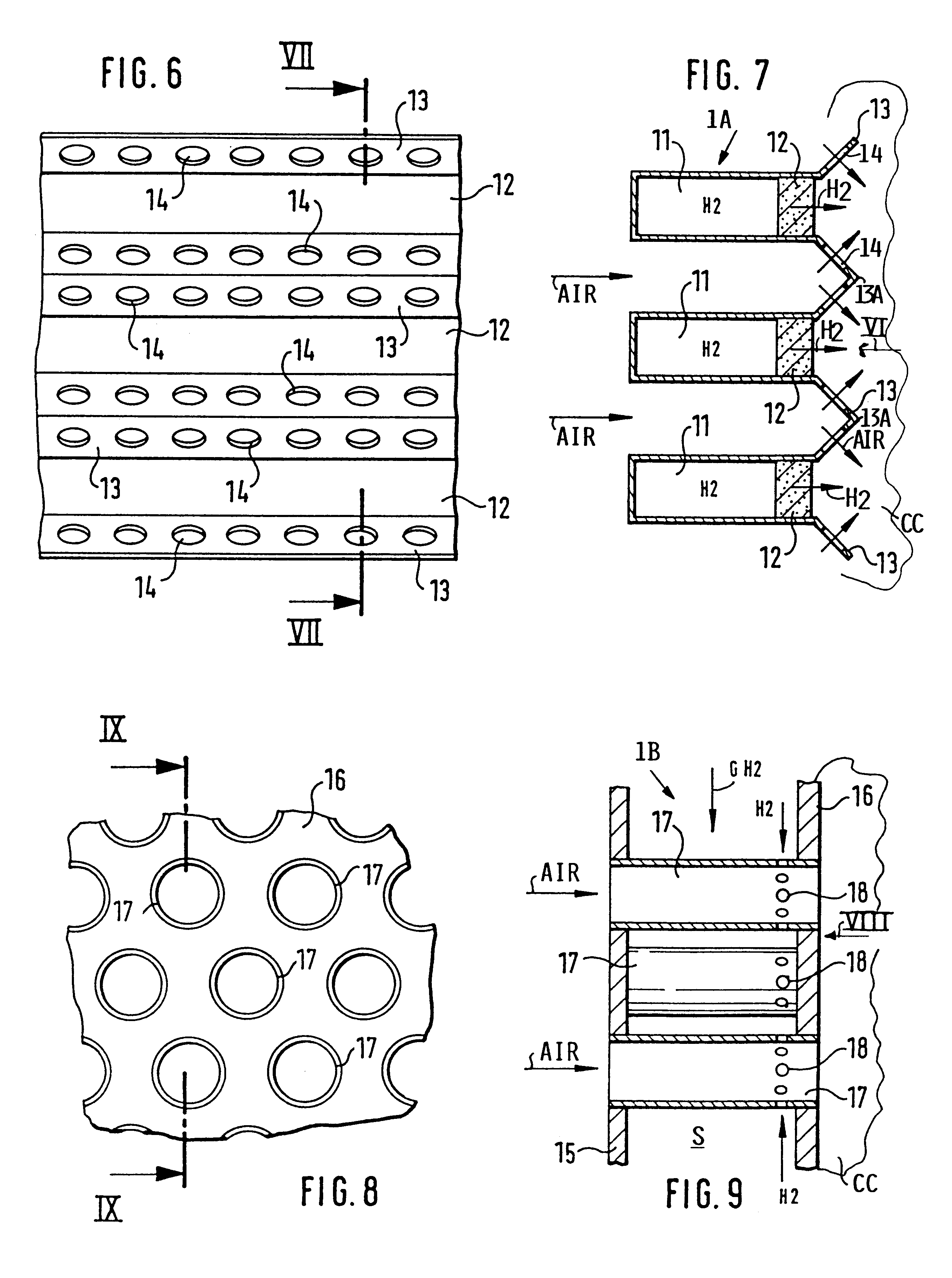Method and combustor for combusting hydrogen
- Summary
- Abstract
- Description
- Claims
- Application Information
AI Technical Summary
Benefits of technology
Problems solved by technology
Method used
Image
Examples
Embodiment Construction
The invention will first be explained with reference to FIG. 24 which illustrates test results performed with a gas turbine engine model A 320 APUGTCP 36-300. FIG. 24 shows the content of NO.sub.x in cubic foot.times.10.sup.-6 per cubic foot of exhaust gas as a function of the flame density per square inch of the combustor surface facing into the combustion chamber. The tests were made under atmospheric conditions which means that the absolute Nox levels measured in the tests are based on atmospheric burner entrance conditions. The combustor had a surface area of 67.9 square inches facing into the combustion chamber. In its original conventional form the combustor had six air injection nozzles distributed over the combustor surface providing 0.088 diffusion flames per square inch. Tests were run with the conventional combustor using hydrogen fuel in one test and kerosene fuel in another test. The NO.sub.x content in the exhaust gas was the same for both fuels, namely as shown at poi...
PUM
 Login to View More
Login to View More Abstract
Description
Claims
Application Information
 Login to View More
Login to View More - R&D
- Intellectual Property
- Life Sciences
- Materials
- Tech Scout
- Unparalleled Data Quality
- Higher Quality Content
- 60% Fewer Hallucinations
Browse by: Latest US Patents, China's latest patents, Technical Efficacy Thesaurus, Application Domain, Technology Topic, Popular Technical Reports.
© 2025 PatSnap. All rights reserved.Legal|Privacy policy|Modern Slavery Act Transparency Statement|Sitemap|About US| Contact US: help@patsnap.com



